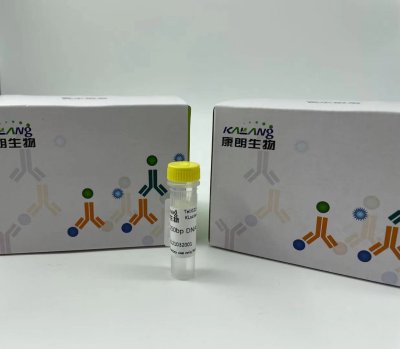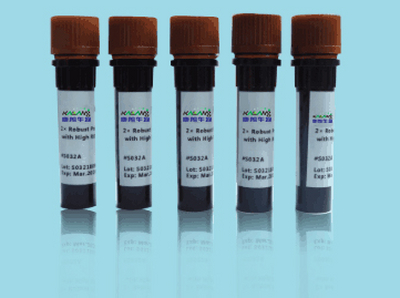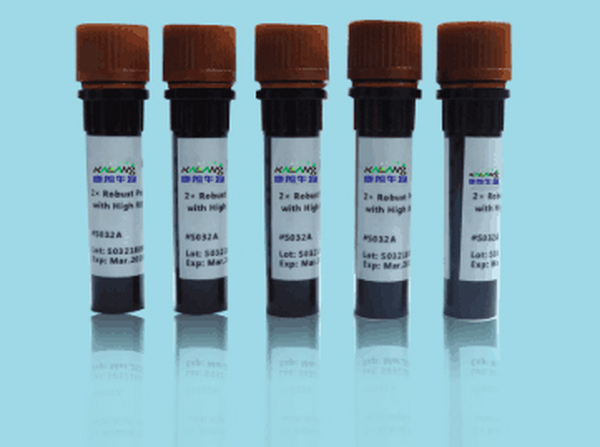QQ:3002763590


客服电话:021-61998208
DMD rabbit Polyclonal Antibody
DMD抗体
DMD抗体应用:IHC-p 1:50-300dystrophin(DMD) Homo sapiens The dystrophin gene is the largest gene found in nature, measuring 2.4 Mb. The gene was identified through a positional cloning approach, targeted at the isolation of the gene responsible for Duchenne (DMD) and Becker (BMD) Muscular Dystrophies. DMD is a recessive, fatal, X-linked disorder occurring at a frequency of about 1 in 3,500 new-born males. BMD is a milder allelic form. In general, DMD patients carry mutations which cause premature translation termination (nonsense or frame shift mutations), while in BMD patients dystrophin is reduced either in molecular weight (derived from in-frame deletions) or in expression level. The dystrophin gene is highly complex, containing at least eight independent, tissue-specific promoters and two polyA-addition sites. Furthermore, dystrophin RNA is differentially spliced, producing a range of different transcripts, encoding a large set of protein isoforms. Dystrophin (as enc
DMP1 rabbit Polyclonal Antibody
DMP1抗体
DMP1抗体应用:WB 1:500-2000 ELISA 1:5000-20000dentin matrix acidic phosphoprotein 1(DMP1) Homo sapiens Dentin matrix acidic phosphoprotein is an extracellular matrix protein and a member of the small integrin binding ligand N-linked glycoprotein family. This protein, which is critical for proper mineralization of bone and dentin, is present in diverse cells of bone and tooth tissues. The protein contains a large number of acidic domains, multiple phosphorylation sites, a functional arg-gly-asp cell attachment sequence, and a DNA binding domain. In undifferentiated osteoblasts it is primarily a nuclear protein that regulates the expression of osteoblast-specific genes. During osteoblast maturation the protein becomes phosphorylated and is exported to the extracellular matrix, where it orchestrates mineralized matrix formation. Mutations in the gene are known to cause autosomal recessive hypophosphatemia, a disease that manifests as rickets and osteomalacia. The gene structure is conser
DMRT2 rabbit Polyclonal Antibody
DMRT2抗体
DMRT2抗体应用:WB 1:500-2000 The protein encoded by this gene belongs to the DMRT gene family, sharing a DM DNA-binding domain with Drosophila 'doublesex' (dsx) and C. elegans mab3, genes involved in sex determination in these organisms. Also, this gene is located in a region of the human genome (chromosome 9p24.3) associated with gonadal dysgenesis and XY sex reversal. Hence this gene is one of the candidates for sex-determining gene(s) on chr 9. [provided by RefSeq, Apr 2010],
DMRTA rabbit Polyclonal Antibody
DMRTA抗体
DMRTA抗体应用:WB 1:500-2000 ELISA 1:5000-20000function:May be involved in sexual development.,similarity:Belongs to the DMRT family.,similarity:Contains 1 DM DNA-binding domain.,tissue specificity:Expressed in liver, kidney, pancreas, prostate and weakly detected in testis and ovary.,
DNA2 rabbit Polyclonal Antibody
DNA2抗体
DNA2抗体应用:WB 1:500-2000 ELISA 1:5000-20000DNA replication helicase/nuclease 2(DNA2) Homo sapiens This gene encodes a member of the DNA2/NAM7 helicase family. The encoded protein is a conserved helicase/nuclease involved in the maintenance of mitochondrial and nuclear DNA stability. Mutations in this gene are associated with autosomal dominant progressive external ophthalmoplegia-6 (PEOA6) and Seckel syndrome 8. Alternatively spliced transcript variants have been found for this gene. [provided by RefSeq, Sep 2014],
DND1 rabbit Polyclonal Antibody
DND1抗体
DND1抗体应用:WB 1:500-2000 This gene encodes a protein that binds to microRNA-targeting sequences of mRNAs, inhibiting microRNA-mediated repression. Reduced expression of this gene has been implicated in tongue squamous cell carcinoma. Two pseudogenes of this gene are located on the long arm of chromosome 17. [provided by RefSeq, Dec 2010],
DNER rabbit Polyclonal Antibody
DNER抗体
DNER抗体应用:WB 1:500-2000 ELISA 1:5000-20000function:Activator of the NOTCH1 pathway. May mediate neuron-glia interaction during astrocytogenesis.,similarity:Contains 1 follistatin-like domain.,similarity:Contains 10 EGF-like domains.,subcellular location:Present on the membrane of dendrites and cell bodies but excluded from axonal membrane. Also found in early endosomes in the somatodendritic region.,subunit:Interacts with AP1G1. Interacts with NOTCH1.,tissue specificity:Expressed in brain, spinal cord and adrenal gland.,
最新动态
-

Anti-GNGT1 KL20092-001(50ul)
2021-10-11 -

Anti-GNGT1 antibody(50ul) KL20093-001
2021-10-11 -

MUC5AC (PT2058) mouse Monoclonal Antibody
2021-01-06 -

mOrange mouse Monoclonal Antibody(Mix)
2021-01-05
热门标签
- Histone H3 rabbit Polyclonal Antibody Histone H3抗体
- EGFR rabbit Polyclonal Antibody EGFR抗体
- Cy3 Conjugated
- AbFluor™ 555 Conjugated
- AbFluor™ 680 Conjugated
- AbFluor™ 350 Conjugated
- AbFluor™ 647 Conjugated
- AbFluor™ 594 Conjugated
- AbFluor™ 405 Conjugated
- Cy5 Conjugated
- AbFluor™ 488 Conjugated
- Cyclophilin B抗体 Cyclophilin B Monoclonal Antibody(2B10)
- COX IV抗体 COX IV Monoclonal Antibody(6C8)
- PCNA抗体 PCNA Monoclonal Antibody(12D10)
- FAK rabbit Polyclonal Antibody FAK抗体
邮箱:3002763590@qq.com
电话:021-61998208

扫码关注微信公众号






